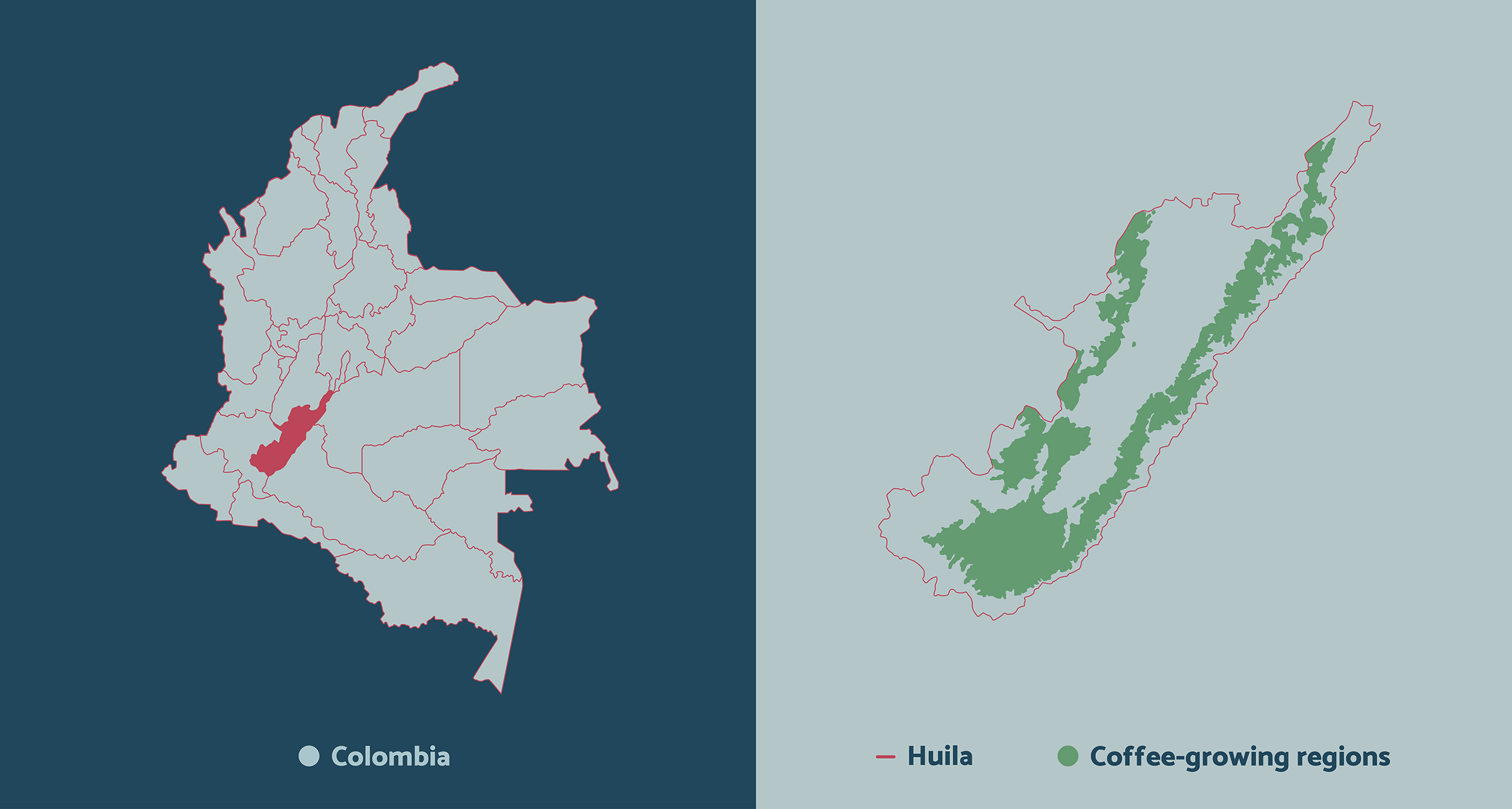Harvest: August–December (main crop), March–June (mitaca)
Elevation: 1,000–2,200 metres (3,300–7,200 feet) above sea level
Rainfall: 1,300–1,650 millimetres (51–65 inches)
Temperature: 17°C–23°C (63°F–73°F)
Huila is Colombia’s largest and best-known coffee-producing region. Coffee growers in Huila have been at the forefront of a dramatic transformation in the Colombian coffee industry over the last few decades. The rapid expansion of coffee production in Huila, Cauca, and Nariño has led to a shift in Colombian coffee production, away from the Eje Cafetero and towards the southwest.
Huila is now not only Colombia’s largest coffee producer overall, but also the most important region for specialty — 35% of the department’s production is specialty grade (Rengifo and Trujillo 2015), and coffees from Huila and Nariño consistently dominate the Colombian Cup of Excellence competitions (Cup of Excellence 2021). Thanks to its reputation for quality, Huila was granted a Denomination of Origin (DO) in 2011 (Superintendency of Industry and Commerce 2022).
Huila’s rise to prominence went hand in hand with a general transition in Colombia during the twentieth century from large haciendas to small farms. Coffee was first planted in the region in 1862 (Guhl 2008), and by the early 1930s, Huila had 4,471 coffee farms (Palacios 2009), which produced around 48,000 bags per year — just 1.5% of Colombia’s total production (Bynum 1931).
In the latter half of the twentieth century, faced with labour shortages and unstable coffee prices, some of the large farms started to be broken up and sold to smallholders. Many of Huila’s smallholder families arrived during the 1970s, when land was cheap (Salcedo 2016). Many of the new coffee growers were workers who had travelled to the Eje Cafetero for work and returned, bringing their knowledge of coffee with them (Duarte 2013).
